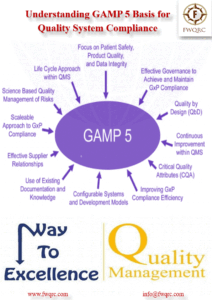What is a Food Safety Plan?
A Food Safety Plan (FSP) consists of the primary documents in a preventive controls food safety system that provides a systematic approach to the identification of food safety hazards that must be controlled to prevent or minimize the likelihood of foodborne illness or injury. It contains a collection of written documents that describes activities that ensure the safety of food during manufacturing, processing, packing, and holding. See 21 CFR 117.126
Hazard analysis to identify whether there are hazards requiring a preventive control. This hazard analysis must be written, regardless of whether any hazards requiring a preventive control are identified. (Some facilities may not identify any hazards requiring a preventive control.)
When the hazard analysis identifies hazards requiring a preventive control, the FSP also includes the following written documents:
- Preventive controls (see 21 CFR 117.135), as appropriate to the facility and the food, to ensure safe food is produced, including:
- Process controls.
- Food allergen controls
- Sanitation controls
- Supply-chain controls.
- Recall plan.
- Other controls
- Procedures for monitoring the implementation of the preventive controls, as appropriate to the nature of the preventive control and its role in the facility’s food safety system.
- Corrective action procedures, as appropriate to the nature of the hazard and the nature of the preventive control
- Verification procedures, as appropriate to the nature of the preventive control and its role in the facility’s food safety system
Who Develops the Food Safety Plan for a Facility?
A “preventive controls qualified individual” (PCQI) must develop (or oversee the development of) the FSP. A PCQI is a person with the education, training, or experience (or a combination of these) to develop and apply a food safety system. A PCQI can be qualified through job experience or by completing training equivalent to the standardized curriculum recognized as adequate by FDA (e.g., the Food Safety Preventive Controls Alliance (FSPCA) training). The PCQI does not need to be an employee of the facility. See 21 CFR 117.126(a) and the definition of PCQI in 21 CFR 117.3
What are the Differences Between a HACCP Plan and a Food Safety Plan?
Hazard Analysis and Critical Control Points (HACCP) is a preventive food safety strategy that is a systematic approach to the identification and assessment of the risk of hazards from a particular food or food production process or practice and the control of those hazards that are reasonably likely to occur. HACCP systems have been mandated by U.S. Federal regulations issued by the Food and Drug Administration (FDA) for seafood and juice and by the Food Safety and Inspection Service (FSIS) for meat and poultry.
The preventive controls approach to controlling hazards used in an FSP incorporates the use of risk-based HACCP principles in its development. (See the HACCP principles and their application as described by the National Advisory Committee on Microbiological Criteria for Foods.) Although an FSP and a HACCP plan are similar, they are not identical.
Preventive Control Measures:
There are several control approaches, which may or may not include CCPs, that you can consider, depending on the potential hazard and where in the process flow diagram you determine the control measure should be applied. These include:
- Supply-chain controls
- Food allergen controls
- Sanitation controls
- Process controls
Supply-chain controls involve verification of controls used by suppliers to control hazards in raw materials or other ingredients before receipt by a manufacturer/processor. Food allergen controls include labeling and controls to prevent cross-contact, such as product sequencing, in addition to sanitation controls (i.e., to prevent cross-contact with allergens from other foods produced on the same line).
Sanitation controls may be important to prevent contamination with microbial pathogens, especially for RTE foods that are exposed to the environment. Process controls are applied at specific processing steps, where critical parameters such as time and temperature may be identified to control the hazard of concern.
Takeaway:
For every hazard you identify as requiring a preventive control, you must identify and implement at least one preventive control measure.
When identifying preventive controls for your food process, your Food Safety Team should also consider.
- The effect of the control on identified potential food safety hazards (e.g., Does the preventive control significantly minimize or prevent the potential food safety hazards identified? Is the preventive control hazard-specific or does it control more than one hazard? Does the control effectiveness depend upon other controls? Can the preventive control be validated and verified?)
- The feasibility of monitoring those controls (e.g., Are the critical limits (minimum or maximum values) and, if appropriate, operating limits, for the preventive control measurable and practical? Can you obtain the results of monitoring quickly (i.e., real-time) to determine if the process is in control? Are you monitoring a batch or continuous process? Are you monitoring continuously or doing spot checks? Can the parameters be monitored in-line or must the product be sampled? Will the monitored parameters be indirectly linked to the critical limit (i.e., belt speed or pump flow rate for time of process)? Who will perform the monitoring or checks and what are the required qualifications? How is the monitoring to be verified?)
If you would like to receive notifications about regulatory guidance, email: info@fwqrc.com





